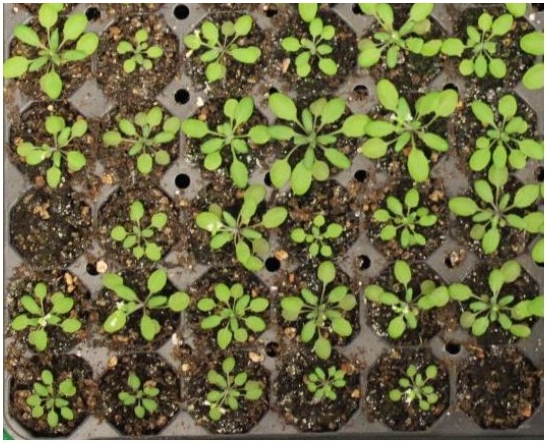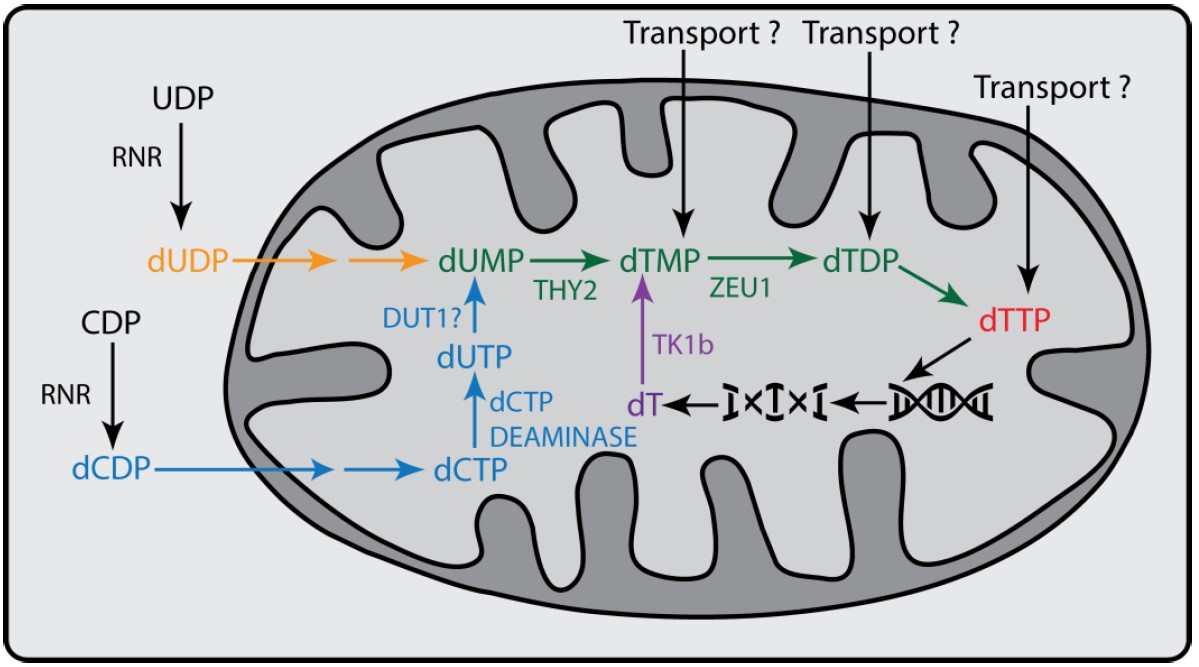Maintenance of nucleotide pools
Errors in the hereditary substance, DNA, limit the survival of an organism and are, for example, the molecular cause of hereditary diseases and cancer. How organisms repair DNA strands with incorrectly incorporated bases has been the subject of intensive research in recent decades. In addition, it is essential for the precision of DNA synthesis that the building blocks of DNA polymerization, the deoxynucleotide triphosphates (dNTPs), are present in exactly the right proportions and in high purity. Contaminations are e.g. caused by deamination and oxidation processes, which lead to changes in the chemical structure of the dNTPs. Nucleotides modified in this way are often efficiently integrated into the DNA during DNA synthesis via DNA polymerases and can lead to mutations.
Deoxynucleotide metabolism in organelles
An additional challenge for plants is the provision of dNTPs for the synthesis of DNA in chloroplasts and mitochondria. According to the endosymbiont theory, mitochondria arose by the incorporation of alpha-proteobacteria into a host cell. The endosymbiont subsequently lost many biosynthetic pathways crucial for sustaining life creating a dependency on the import of metabolites from the cytosol via dedicated transporters. However, some pathways stayed at least partially in the mitochondria. For example in Arabidopsis, it was demonstrated that biosynthesis genes responsible for thymidylate (the ‘T’ base) synthesis are located in the mitochondria suggesting that T metabolism is taking place at least partially in these plant organelles. A lack of T biosynthesis can result in e.g. mitochondrial DNA depletion syndrome, a severe disorder in humans.






